This past June I spent lots of time with Western and Clark’s Grebes as they were raising their families. The two species are quite similar but the adult birds in this post can be recognized as Clark’s Grebes by their bright yellow-orange bills and the fact that their eyes are surrounded by white plumage, rather than black.
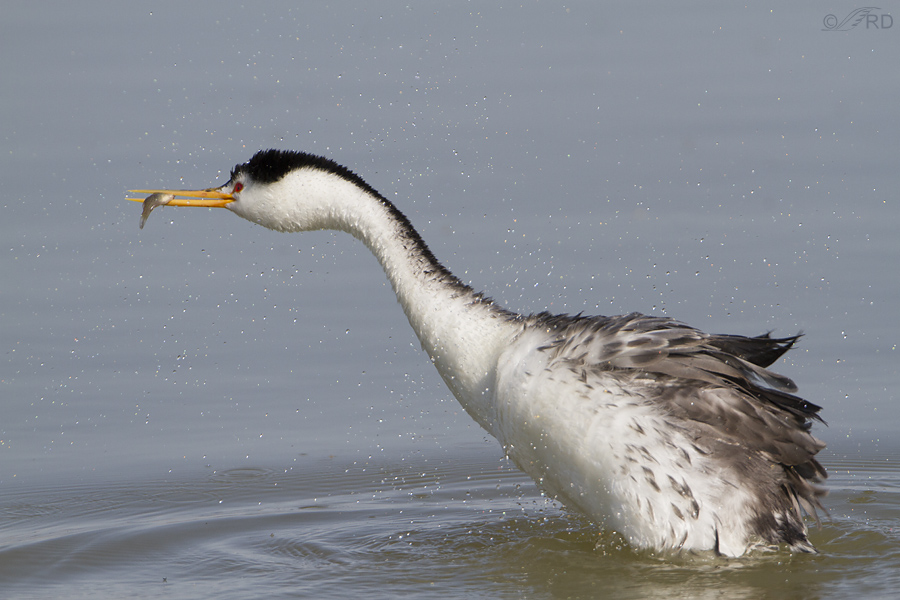
1/2000. f/7.1, ISO 500, 500 f/4, 1.4 tc, natural light
This female of a mated pair was fishing for her family as the male back-brooded two chicks (the sexes take turns with each role). I happened to catch her just as she emerged from the water with a fish and shook the water off. I wish I had better eye contact and more room around the grebe, but this image is full frame. I include it here because it’s the logical beginning of this “fish story”.
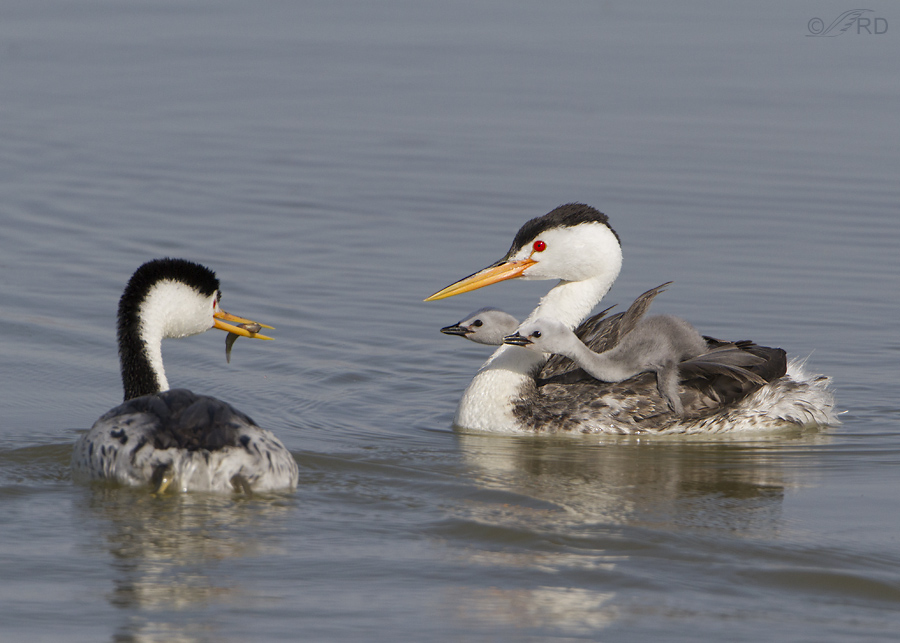
1/2000. f/8, ISO 500, 500 f/4, 1.4 tc, natural light
Seconds later she swam over to deliver the fish to her family. Sometimes the fish will be given to the brooding parent, who may eat it or give it to a chick. Other times, the fishing parent gives it directly to one of the youngsters. Either way, if the chicks are hungry they become very excited and aggressive in their attempts to be the one who gets the fish. Before the young birds saw breakfast coming their way, they were tucked down peacefully under each wing with only their heads and necks sticking out. All that changed in an instant.
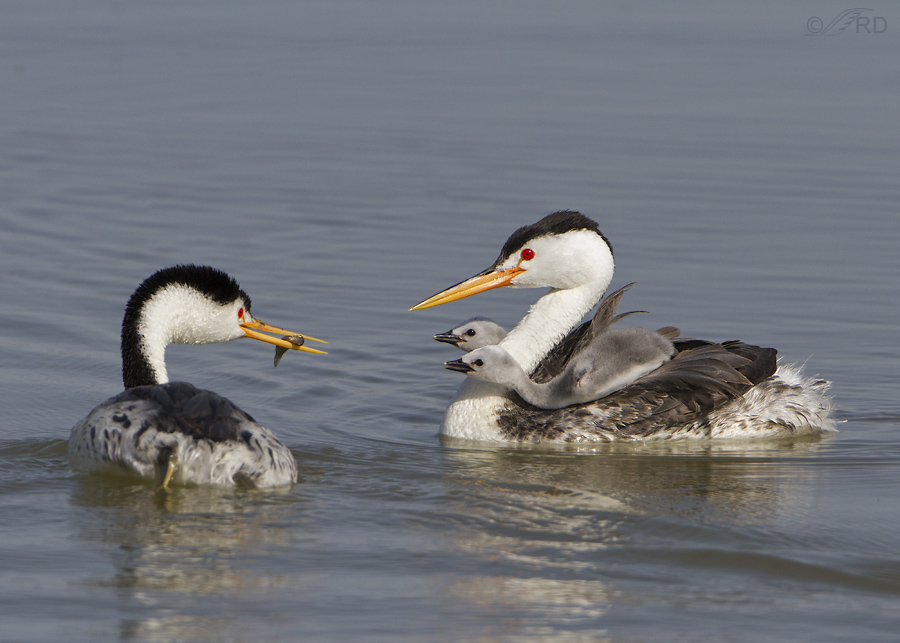
1/2000. f/8, ISO 500, 500 f/4, 1.4 tc, natural light
As you can see, both chicks have their eyes on the prize.
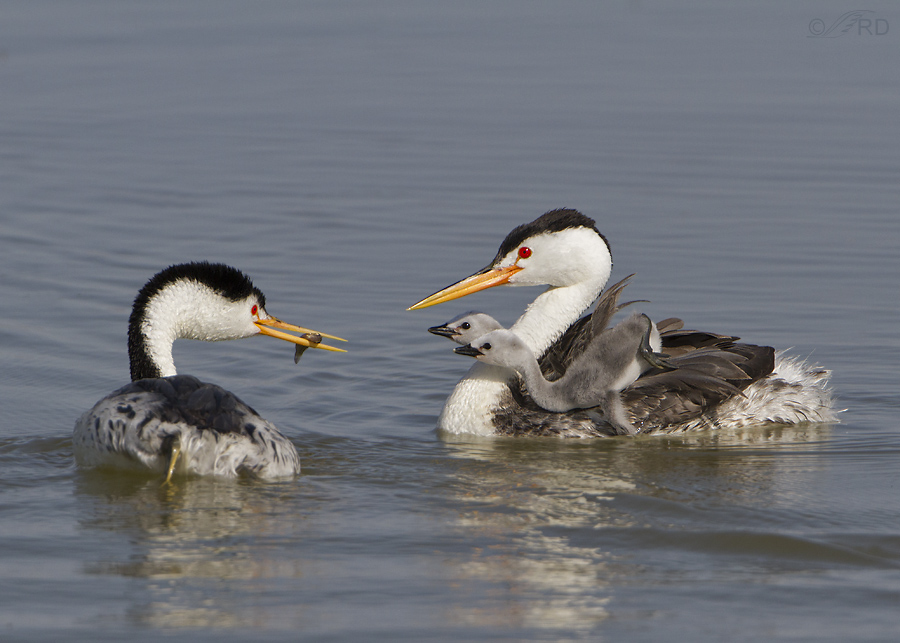
1/2000. f/8, ISO 500, 500 f/4, 1.4 tc, natural light
So much so, that one of the chicks is in danger of falling into the drink.
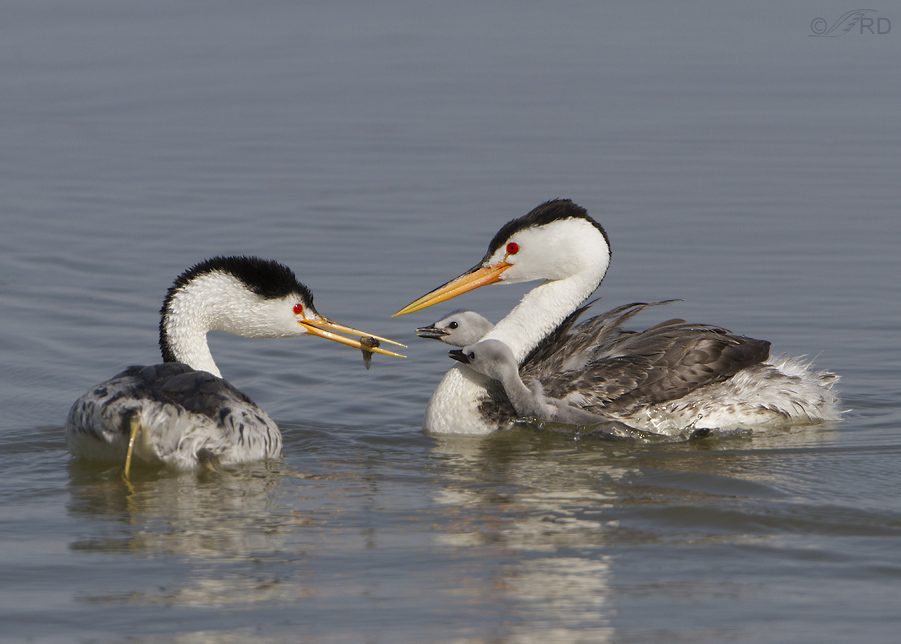
1/2000. f/8, ISO 500, 500 f/4, 1.4 tc, natural light
Which is exactly what happened.
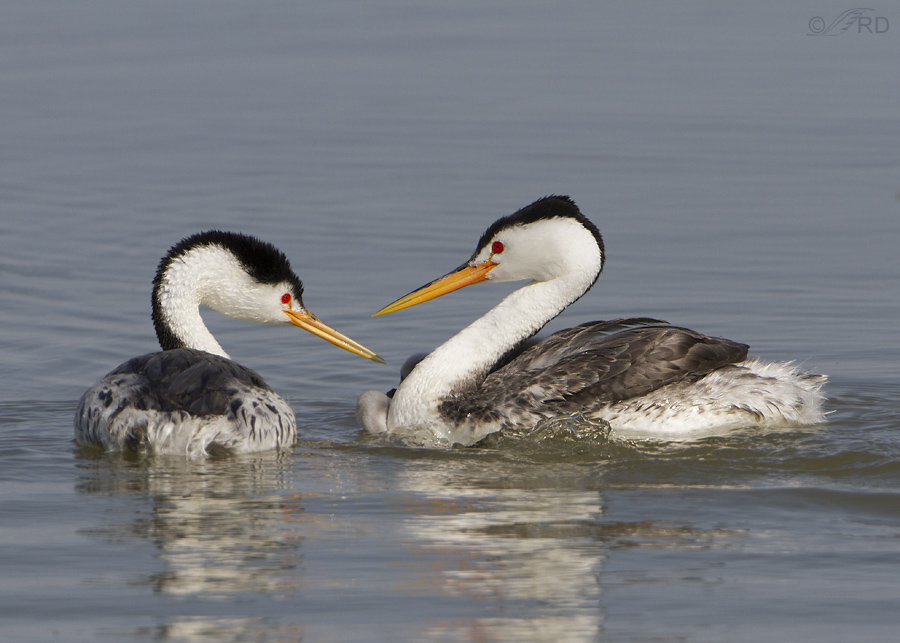
1/2500. f/8, ISO 500, 500 f/4, 1.4 tc, natural light
In fact, it was completely dunked and disappeared under the water. The other youngster got the fish.
Many folks don’t notice the sexual dimorphism of grebes (Western or Clark’s) but it’s really pretty easy to tell the sexes apart if you’re relatively close to the birds. Males are larger and their bill is longer and much thicker than that of the female. So it becomes obvious that the male is the bird on the right.
Ron


These are wonderful! I could just sit and look at them all day! What a wonderful catch so beautifully photograhed. A masterpiece!@ Thanks for sharing!
Thank you very much, Charlotte.
Way to cool, what a wonderful sequence of images and amusing at the same time, well done Ron.
Thank you, Jim. Hope you’ve got some birds down there in Arizona.
They are really cute!
I agree, Nicole.
Thanks so much for sharing this charming story with us. I love it. Thanks also for the tips about how to tell the male and female apart. Wonderful way to start my day today!
I’m glad you find the “tips” helpful, Sharon. I know that some of my readers do, but others of them know a lot more about this stuff than I do so I try to find a happy medium about what I include on these posts.
As always, amazing images Ron. You’ve captured a very intimate moment here. Thanks for delivering a visual insight to a very prized experience.
You liked what I like, Bryce – the intimacy of this look at familial behavior.
Grebes ar some of my favorite birds. These are the best pictures I’ve ever seen of them. Thanks for sharing.
Thanks very much, Teri.
Fabulous images! You had my whole family oohing and aahing!
I loved hearing that your entire family enjoyed the images, Robert. Thanks!
Beautiful images.
Thank you, Vincent.
This is a beautiful way to start the day seeing these wonderful photos and learning more about bird behavior from the best teacher I have found on the internet. Thanks again!
Thanks so very much, Phyllis.
Amazing series, Ron. It must have been fun to watch.
It was a blast, Bob. Truly.
These are so amazing. Great detail and color. They are so cute. I hope that little one in the water was able to climb back up.
Thanks, Dina. At this age they usually have no problem getting back on top but when they’re a little younger the parent will often stick a foot out for the chick to use to climb back up.